Cloud Nine
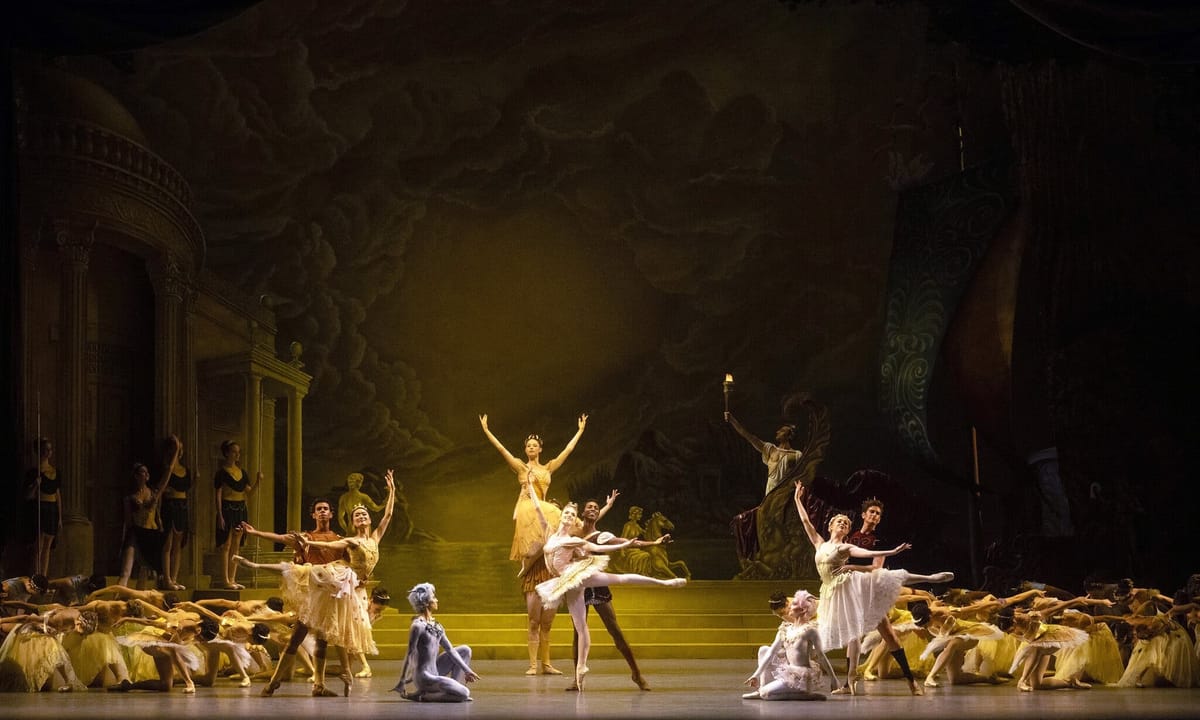
"Sylvia"
American Ballet Theatre
Metropolitan Opera House
New York, NY
July 8, July 9 matinee, July 10, July 11, 2025
ABT presented Sir Frederick Ashton’s luminous ballet “Sylvia” after a 10-year hiatus, which meant that most of the dancers had to start from scratch to absorb the elegant style and fiendishly difficult choreography of the multi-layered ballet; their work certainly paid off, as the audience cheered wildly at the curtain calls. Ashton created the ballet in 1952 for the Royal Ballet (to give the company its current name), using the magical 1876 Delibes score, written for the Paris Opera Ballet. Ashton had originally thought about updating the classical (with a capital “C”) story, which was based on “Aminta”, a 1573 poem by Torquato Tasso about a shepherd in love with Sylvia, an acolyte of the chaste goddess Diana who would rather hunt than look at a man. The original ballet was a look backwards to the pre-Revolutionary French style, where shepherds represented innocent nobility and nature, in the form of the gods, was generous and harmonious, to a time before the cheerful, friendly naiads and dryads were replaced by the unattainable and tragic wilis and sylphides of the Romantic period.
The simple story, very similar to “Daphnis and Chloe”, starts in a grotto with a shrine for Eros, the god of love. Aminta enters and dances a pensive prayer to Eros, full of longing for Sylvia, who enters with her retinue, observed secretly by the dark hunter Orion. The nymphs find Aminta’s cloak and drag him before Sylvia, who decides he isn’t important enough to shoot, so she decides to attack Eros, the source of all this bother, accidentally shooting Aminta instead. Eros, to get even, shoots her with his arrow of love, and she returns hopelessly in love with the poor shepherd. She is kidnapped by Orion, Eros revives Aminta, who goes off to rescue Sylvia.
Act II is set in Orion’s cave, where Sylvia dances to entice him into drinking himself silly. She find the precious arrow, prays to Eros, who appears and shows her a vision of Aminta, mourning for her, and they both sail off in a boat back home just in time to join the peasants celebrating the festival of Bacchus, which takes place next to Diana’s temple. Sylvia and Aminta declare their love, Orion charges in, fights with Aminta and knocks him down, Sylvia runs and hides in Diana’s temple, Orion bangs on the temple door, and Diana comes out and kills him. Diana refuses to countenance Sylvia’s leaving the sisterhood until Eros reminds her, via a lovely tableau vivant, of her own earlier love for the shepherd Endymion, and she bows to Eros’ power, setting Sylvia free to marry Aminta.
Ashton finally decided to use the original ballet libretto (David Vaughn’s book on Ashton’s ballets quotes a letter to Ashton from Sacheverell Sitwell saying “I feel so certain you could do something beautiful with that music”) and choreographed his ballet for Margot Fonteyn, and the heroine dominates all three acts. Like Aurora in “The Sleeping Beauty”, she roams through many styles—fierce in Act I until Eros’ arrow pierces her heart, calculatingly seductive in Act II, and radiantly classical in Act III. Aminta, as befits a Classical hero, has only to be his pure, noble self for Eros to straighten everything out for him. Like the Prince in “The Sleeping Beauty” (another ballet inspired by the calm, rational ideals of pre-Revolutionary France), Aminta can seem passive to modern audiences, and its lessons somewhat trivial. After all, “The Sleeping Beauty” appears to teach us that it is important to double check your guest list, while “Sylvia’s” moral seems to be “Don’t shoot Eros”. But both ballets create worlds for both peasant and prince where reason, harmony, and love triumph and let the audience share, if only for a while, in those exalted places, and walk out of the theater a little taller and a little more hopeful; it is a privilege to bask in such beauty.
Delibes’ soaring, danceable melodies provide a solid floor for the ballet, and ABT’s orchestra sounded very good, especially the horns, which in earlier years had been somewhat wayward. Despite the libretto’s backward glance, the music is not a pastiche of 18th century style and its lush orchestration points forward to more sophisticated ballet music. (Tchaikovsky famously said that if he had known about “Sylvia’s” score he would never have dared to write “Swan Lake”—there are benefits to living in a world without instant communications.)
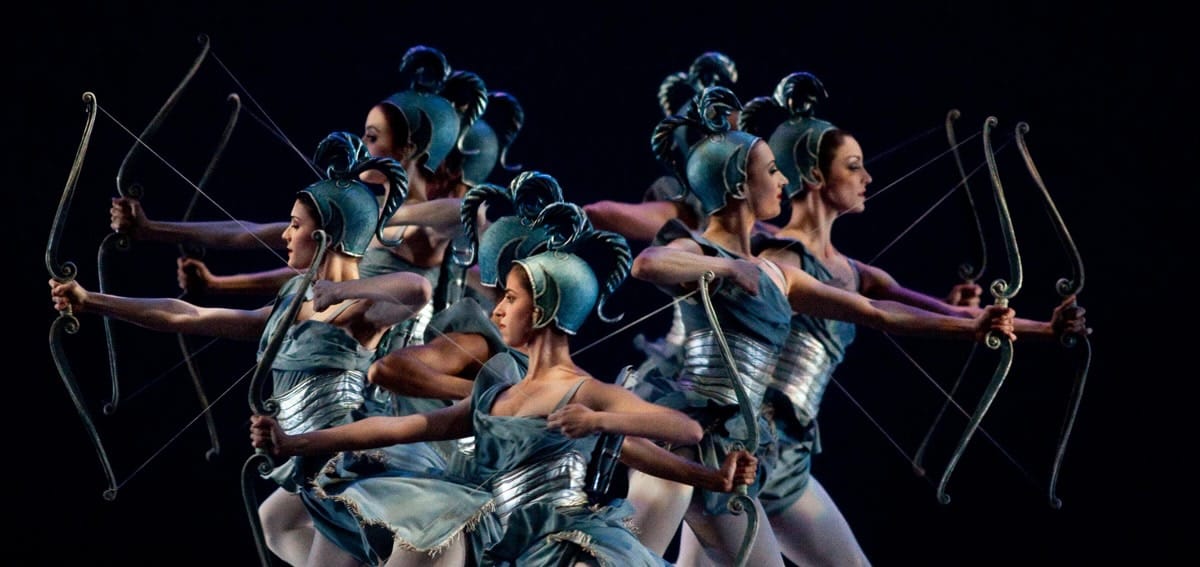
Ashton’s choreography seems wedded to the score which makes the fast, tricky steps seem natural and inevitable. The corps work is tightly constructed, with many moving parts (there were a few minor collisions). I especially enjoyed Sylvia’s eight Act III attendants, as they descended from the boat in a complicated canon, four to the left and four to the right, looking like facets of a jeweled necklace. Sylvia’s Act I cohorts, the chic little French valkyries, tore through their beginning dance with a fierce determination, shaking their bows as if they couldn’t wait to start their hunt. Ashton gave them some very difficult choreography, including a series of fouettés which have to be synchronized while holding their bows out straight with enough turns to look impressive but not so many that people started to count. Aminta’s peasant friends got a charming dance with lots of fast footwork which the corps seemed to enjoy dancing; their seemingly spontaneous reactions to the Act I drama (Aminta’s death and resurrection) were both understated (no silent film acting) and clear.
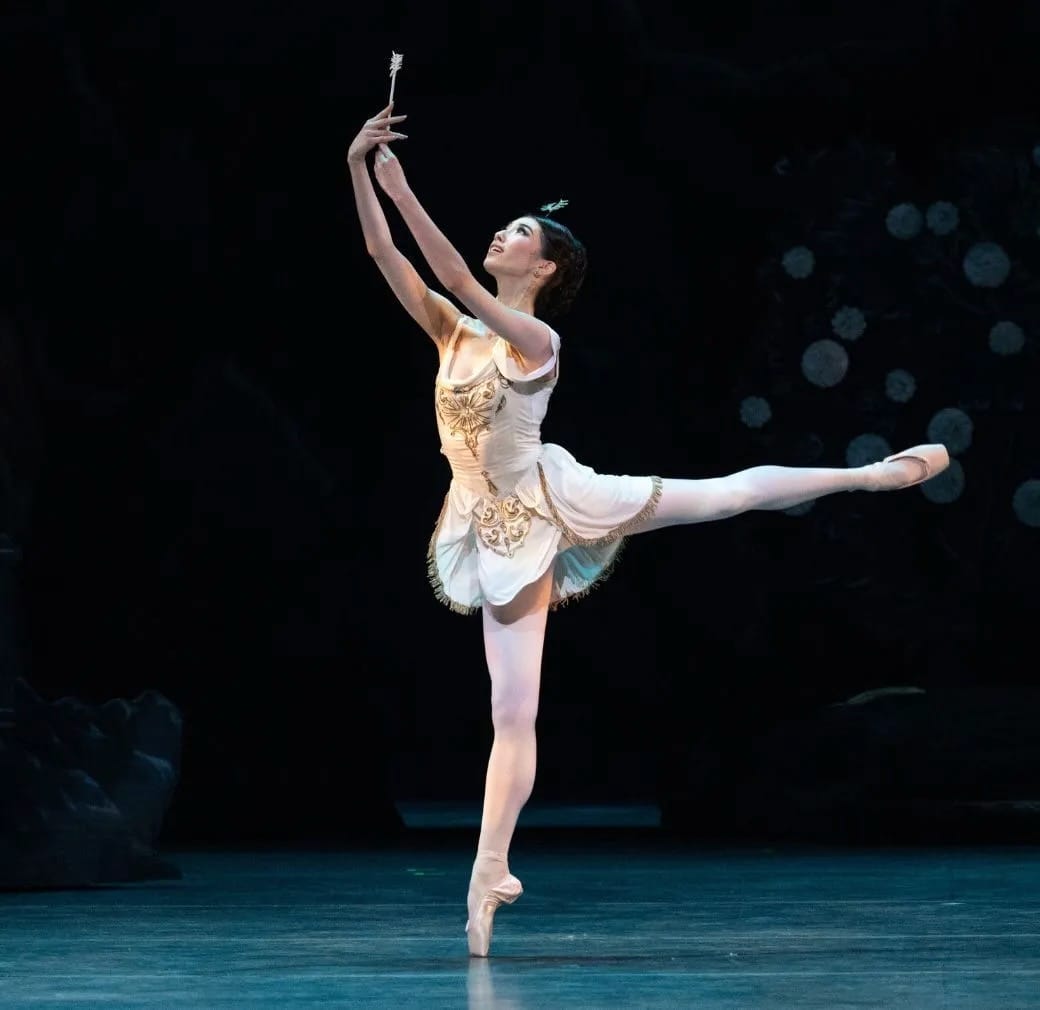
Sylvia, of course, has the most impressive choreography, full of jumps and turns at her first entrance. The opening night Sylvia, Catherine Hurlin, flew through them effortlessly, though she could have been a bit more commanding. Her solo, full of swinging attitudes, was lovely; she has a beautifully secure 90° arabesque. Christine Shevchenko (July 9 matinee) and Chloe Misseldine (July 10) were triumphant huntresses, with high, predatory jumps and wonderfully clear dismissive contempt for Aminta, only to return after Eros’ arrow with trembling bourrees. Skylar Brandt, (July 11), too, had commanding jumps, but her slightly wiry upper body didn’t always flow and her arabesque, so important in Ashton’s choreography, tended to wobble a bit.
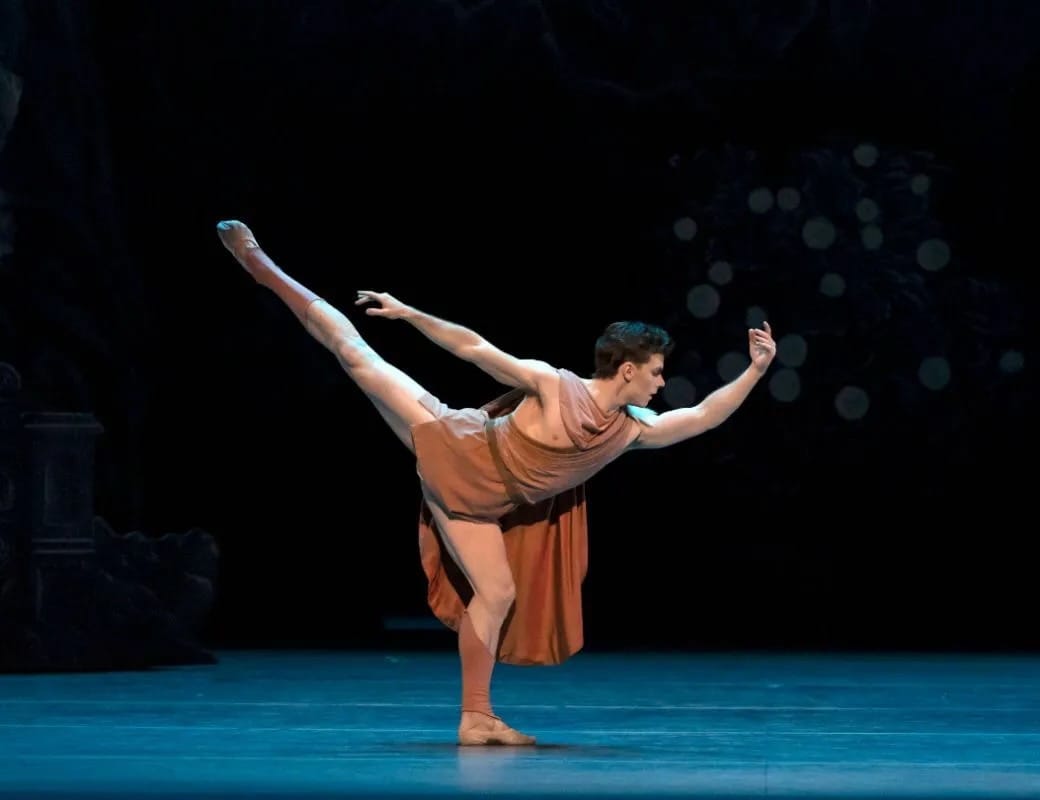
Aminta’s brief, pensive Act I solo needs perfect control and he flows through arabesques with quick changes of direction, as he dances his longing for Sylvia. Calvin Royal III, Hurlin’s Aminta, made the dance an elegiac poem and danced in one long, generous flow. Reece Clarke, a guest from the Royal Ballet, was Shevchenko’s scheduled Aminta, and a last minute substitute Aran Bell, originally slated to dance with Misseldine. He is very tall, and yes, dark and handsome too. I found his opening solo beautifully shaped but a bit impersonal; his arms seemed eager to form those gorgeous shapes, but didn’t seem connected to his heart. Jake Roxander, a technical phenom, was Brandt’s partner. Aminta was his first lead role (surely Basilio is in his future), and the quietly noble, somewhat passive Aminta seemed a bit of a stretch, but he gave an extraordinarily moving performance, full of lyrical longing; all three solos were beautiful but his made me cry.
There was no crying in Act II, where Orion carried off Sylvia to temp her with clothes and jewels. Hurlin was very funny in this scene, giving a sly grin when she realized she could outwit Orion. Brandt was especially plaintive as she refused Orion’s blandishments, and all the Sylvias seemed to enjoy what must be one of the most decorous orgies in ballet.
Sylvia shares the dance honors in Act III with Aminta, as both get a solo and a pas de deux. Unlike Balanchine’s “Sylvia Pas de Deux”, which follows the traditional grand pas de deux format, Ashton’s used only the solos and the adagio; without a bravura coda, the audience can concentrate on the love story. Sylvia began the pas de deux with the pizzicato, full of hops on point combined with constantly shifting arms and head, timed perfectly to the music. Hurlin was terrific, ending in a flurry. Shevchenko did have a bit of trouble with the footwork, but recovered well. Misseldine made the most of the lyrical moments, and seemed to be thrilled to attack the footwork. Brandt, too, made the most of all the hops on point, dancing clearly and sharply, with shimmering feet.
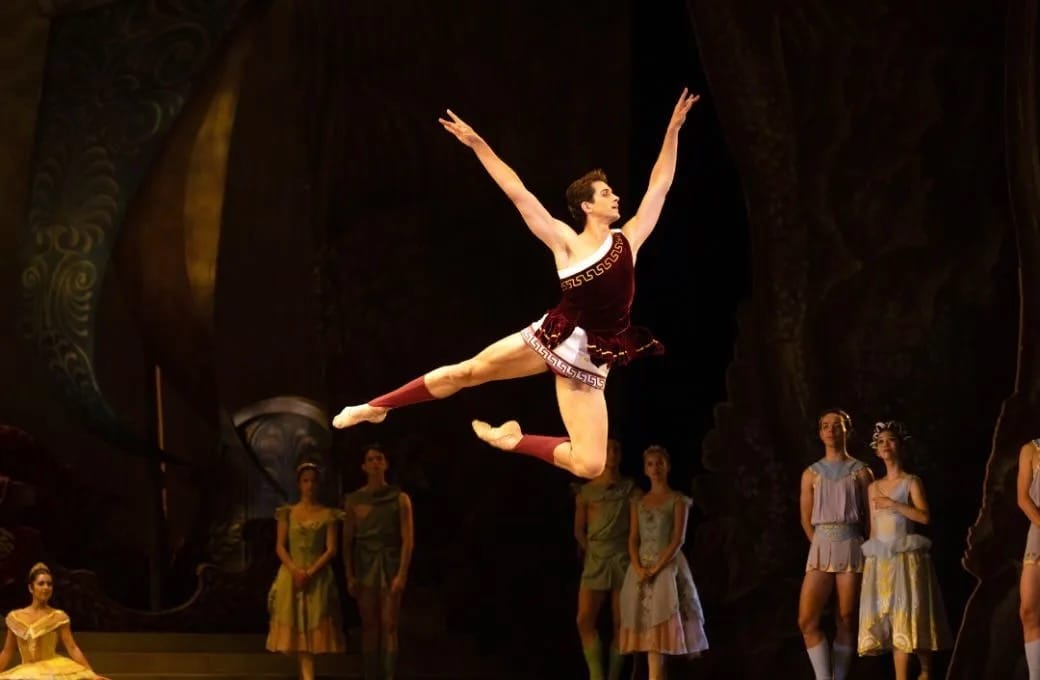
Aminta’s solo is full of small, quick jumps, stag leaps, and sharp changes of direction, ending in a solid landing, with arms posed to look like a Greek statue. Royal was one of the happiest Amintas I have seen, and his grin seemed to say he wanted nothing more than to dance those steps (which he did with impeccable grace) with that Sylvia for this audience; a truly endearing performance. Both Reece and Roxander danced with a more muted, unexaggerated heroism, with strong, elegant, and apparently effortless jumps and solid landings.
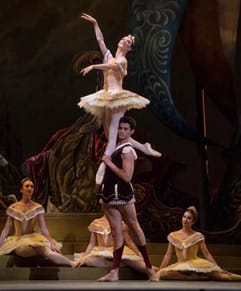
The adagio, one of Ashton’s most beautiful creations, begins with a torch lift variation, where Sylvia seems to float onstage just above Aminta’s shoulder while leaning back in radiant exaltation. None of the Sylvias managed a truly relaxed cambré back, though Brandt came closest; the others just tended to incline their heads a bit, which gave their Sylvias a triumphant air, though once they descended, their lyricism bloomed. The difficult partnering went smoothly (there are two backward jumps into fish dives, and some tricky mid-pirouette catches as well as little head turns that must be perfectly timed). Misseldine and Reece, despite what must have been very limited rehearsal time, were especially impressive, but all the couples made it look like a love song and not a collection of difficult tricks.
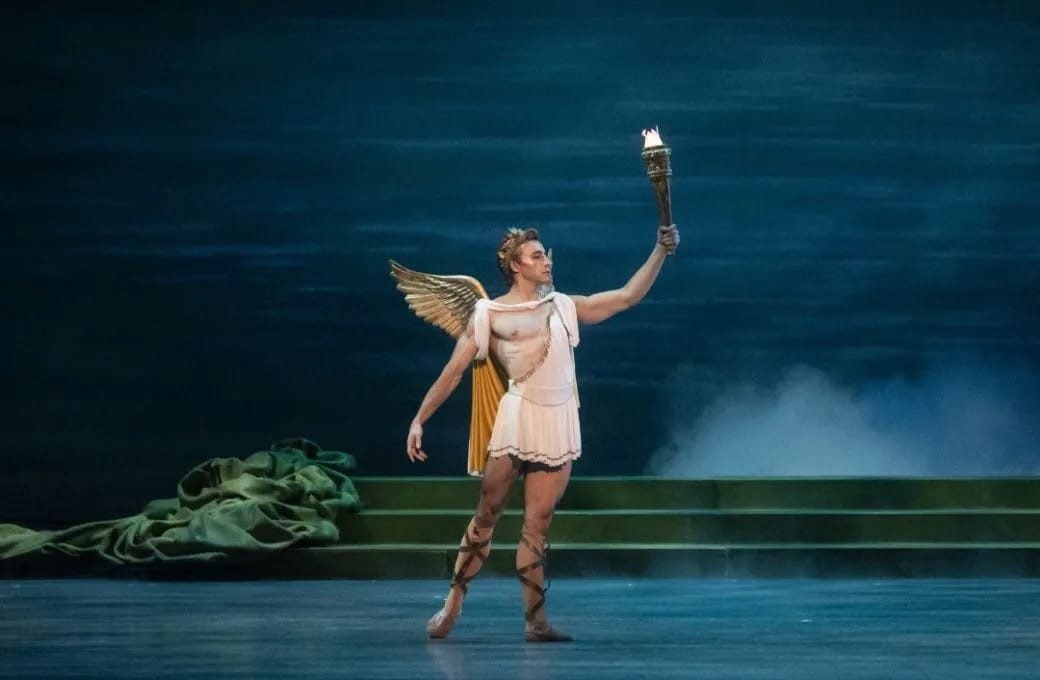
Of course, the couple wouldn’t have been able to celebrate without Eros. Dancing Ashton is hard, but not dancing, it seems, is even harder, as Eros, covered in white paint, must stand motionless and godlike in his grotto for the first 20 minutes of the ballet before finally coming to life, quickly morph into a fun-loving joker, and finally become a noble, powerful figure able to walk gracefully down stairs while wearing wings and holding a torch. Carlos Gonzalez (July 8 and July 10) was magnificent. His Act I prancing little dance before reviving Aminta was a joy—hooray for the child who could not contain his glee whenever Gonzalez pointed his foot. Takumi Miyake July 9 matinee) and Elwince Magbitang (July 11) both got the lighthearted spirit of the little god, but didn’t quite manage Gonzalez’s generous power.
The ballet has many other characters (such a gift to the company). Sierra Armstrong was a compelling Diana, and her brief heartfelt mime scene when Eros reminded her of her earlier lost love was very eloquent. The male duo in Orion’s cave, so reminiscent of the old music hall dancers, has been upgraded to Attendants from Slaves, but their dancing was as frolicking as ever. The two goats in the final act are clearly an homage to Petipa’s cats in “The Sleeping Beauty”, but are also mythologically apt, since Bacchus was often shown with goats. (Ashton’s libretto says they were there to be sacrificed to Bacchus, an idea fortunately left on the page.) I saw three couples and all were witty, precise, and charming; Miyake with his floating jumps was especially impressive. There are far too many naiads, dryads, fauns, muses, and gods to list, but they all deserve credit for such wonderful evenings.
© 2025 Mary Cargill



